CMMS Planning
Creation of Maintenance Plan:
- Identify the maintenance requirements for each equipment or asset.
- Define the maintenance strategies (e.g., preventive, corrective, predictive) for different equipment.
- Determine the maintenance intervals and frequency for each task.
- Create the maintenance plan in the SAP and/or MAXIMO system, specifying tasks, frequencies, and responsible parties.
Creation of Equipment BOM (Bill of Materials):
- Identify the spare parts and materials required for equipment maintenance.
- Create a Bill of Materials (BOM) for each equipment in the maintenance system.
- Include part numbers, descriptions, quantities, and supplier information in the BOM.
Creation or Optimization of Equipment Procedures:
- Review existing maintenance procedures or create new ones if needed.
- Ensure that procedures are well-documented, easy to follow, and align with industry best practices.
- Optimize procedures to improve efficiency and reduce downtime.
Creation of Functional Location:
- Define functional locations to represent physical areas or assets in the facility.
- Assign equipment and assets to appropriate functional locations.
- Maintain accurate location data in the SAP and/or MAXIMO system.
Creation of Equipment List:
- Compile a comprehensive list of all equipment and assets that require maintenance.
- Include essential information such as equipment name, type, serial number, and location.
Prioritization of Work Orders:
- Establish criteria for prioritizing work orders (e.g., safety, criticality, impact on production).
- Prioritize work orders based on these criteria to allocate resources efficiently.
Preparation of 7 Week Rolling Plan:
- Develop a maintenance schedule for the upcoming 7 weeks, incorporating planned maintenance activities.
- Update the rolling plan regularly to accommodate changes in priorities and resource availability.
Yearly PM Leveling (Preventive Maintenance):
- Review and adjust the preventive maintenance tasks and frequencies annually.
- Consider equipment performance data and feedback from maintenance personnel to optimize PM activities.
Resource Loading & Recommendations for Additional Resources:
- Evaluate the availability and capacity of maintenance resources (personnel, tools, equipment).
- Load resources into the maintenance schedule to ensure tasks are assigned to appropriate personnel.
- Identify resource shortages and recommend additional resources if needed.
Work Order Printing and Close Out:
- Print and distribute work orders to the responsible maintenance personnel.
- Track the progress of work orders and ensure timely completion.
- Close out work orders after completion, documenting any relevant information and updates.
